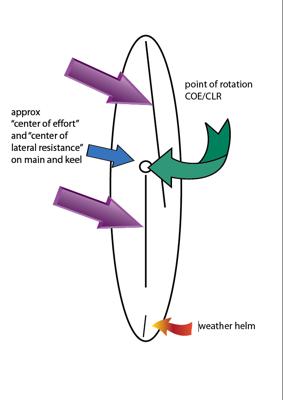jason_hoff
Jason Hoff
Hi all, I bought my 382 about a year and a half ago now, I just found your discussion board recently and having been reading many of the threads, a really excellent discussion board here - thanks to the administrator and all the long time owners / posters on the board.
I am in the process of buying new sails right now, and was just wondering if anyone here has any thoughts or feedback. I have a strong track and batt cars so I am going with a bull batten main, I am also getting a 120% genoa and a cruising chute. I got some quotes from various local lofts (in houston, tx area): Neil Pryde Sails (cameron), Banks Sails, UK-Halsey, and also from 2 discount online lofts: Rolly Tasker Sails, Lee Sails.
The price quotes I got were:
Main (full batt, 3 reefs):
Neil Pryde: ($3461 - 10%) + 6.25% tax == $3309.00
Banks: $3360.00 + 6.25% tax == $3570.00
UK: $2700.00 + 8.25% tax == $2922.00
Rolly Tasker: $1821.00 (incl. shipping)
Lee Sails: $1500.00 (incl. shipping)
Genoa (120%):
Neil Pryde: ($3615 - 10%) + 6.25% tax == $3456.00
Banks: $2480 + 6.25% tax == $2635.00
UK: $2350.00 ($2100.0 + $250.00 for foam) + 8.25% tax == $2543.00
Rolly Tasker: $1855.00 (incl. shipping)
Lee Sails: $1915.00 (incl. shipping)
Chute (tri-radial, 46' x 27', sock):
Neil Pryde: $2800.00
Banks: $2800.00
UK: $2800.00
Rolly Tasker: $2000.00
Lee Sails: $1850.00
The spec sheets they sent me were very similar between all the lofts, so obviously the mail order lofts seem like the best deal ... but I am little hesitant just because they are sooo much less expensive. Anyone have any experience with discount lofts? Also, anyone have any thoughts on full vs. partial or no battens, or on the optimum size of genoa for these boats? I was a little hesitant to go with the full batten main because my boat has a lot of weather helm and I always reef the main first, so I didnt want to add more power to the main - but I just raised my gooseneck 20" to make room for a full height bimini and the area of the new full batt main will recover the 8% or so I lost by raising the boom ...
I am in the process of buying new sails right now, and was just wondering if anyone here has any thoughts or feedback. I have a strong track and batt cars so I am going with a bull batten main, I am also getting a 120% genoa and a cruising chute. I got some quotes from various local lofts (in houston, tx area): Neil Pryde Sails (cameron), Banks Sails, UK-Halsey, and also from 2 discount online lofts: Rolly Tasker Sails, Lee Sails.
The price quotes I got were:
Main (full batt, 3 reefs):
Neil Pryde: ($3461 - 10%) + 6.25% tax == $3309.00
Banks: $3360.00 + 6.25% tax == $3570.00
UK: $2700.00 + 8.25% tax == $2922.00
Rolly Tasker: $1821.00 (incl. shipping)
Lee Sails: $1500.00 (incl. shipping)
Genoa (120%):
Neil Pryde: ($3615 - 10%) + 6.25% tax == $3456.00
Banks: $2480 + 6.25% tax == $2635.00
UK: $2350.00 ($2100.0 + $250.00 for foam) + 8.25% tax == $2543.00
Rolly Tasker: $1855.00 (incl. shipping)
Lee Sails: $1915.00 (incl. shipping)
Chute (tri-radial, 46' x 27', sock):
Neil Pryde: $2800.00
Banks: $2800.00
UK: $2800.00
Rolly Tasker: $2000.00
Lee Sails: $1850.00
The spec sheets they sent me were very similar between all the lofts, so obviously the mail order lofts seem like the best deal ... but I am little hesitant just because they are sooo much less expensive. Anyone have any experience with discount lofts? Also, anyone have any thoughts on full vs. partial or no battens, or on the optimum size of genoa for these boats? I was a little hesitant to go with the full batten main because my boat has a lot of weather helm and I always reef the main first, so I didnt want to add more power to the main - but I just raised my gooseneck 20" to make room for a full height bimini and the area of the new full batt main will recover the 8% or so I lost by raising the boom ...


